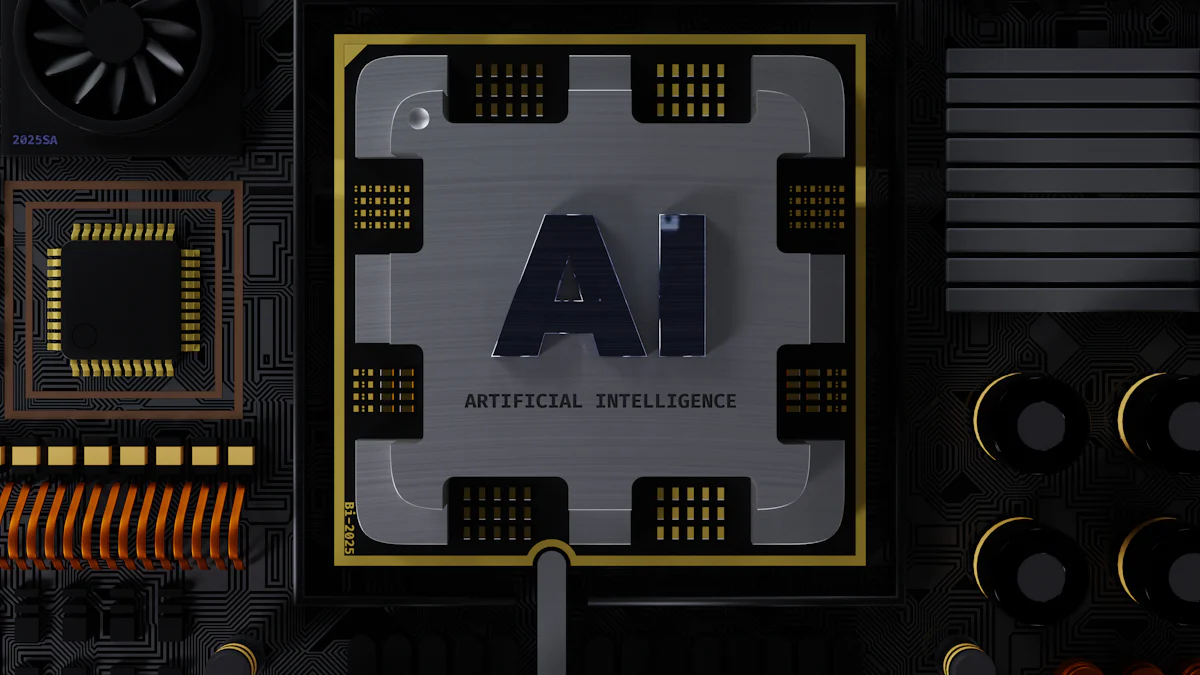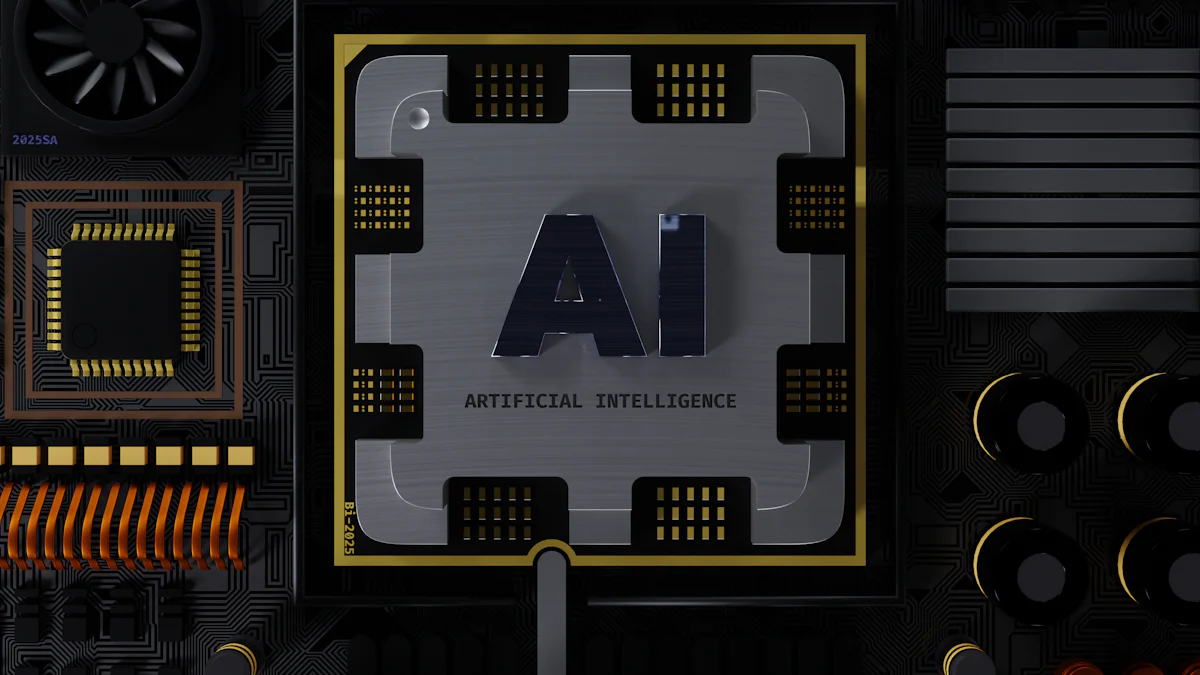Optimizing the Semiconductor Supply Chain with AI

The semiconductor supply chain forms the backbone of modern technology, driving advancements in various industries. However, this critical network faces significant challenges, including supply shortages and demand fluctuations. These issues have impacted production and profits across sectors like automotive and consumer goods. Artificial intelligence (AI) offers a promising solution by providing real-time insights into pricing and demand.JUSDA has developed an AI product called the JusAI Intelligent Dialogue Engine, which is integrated into their JusLink Technology Platform. This AI-driven engine leverages large language models to revolutionize traditional logistics operations. Users can interact with the system through a single window, perform one-click Q&A, and view all interactions with the chatbot. This allows them to obtain required services accurately, rapidly, and at low cost. The JusAI Intelligent Dialogue Engine enhances the service experience for customers, opening new possibilities for intelligent supply chain management. AI can optimize supply chain management, enhancing resilience and efficiency.
Understanding the Semiconductor Supply Chain

Key Components of the Semiconductor Supply Chain
Raw Material Sourcing
Raw material sourcing forms the foundation of the semiconductor supply chain. Companies acquire essential elements like silicon, germanium, and gallium arsenide. These materials undergo rigorous quality checks to ensure purity and suitability for chip production. Efficient raw material sourcing minimizes costs and reduces delays in the manufacturing process.
Manufacturing Processes
Manufacturing processes in the semiconductor industry involve several stages. The design phase includes creating blueprints for semiconductor chips. Fabrication follows, where companies use advanced machinery to etch intricate patterns onto silicon wafers. Assembly, testing, and packaging (ATP) ensure that each chip meets stringent performance standards before reaching the market.
Distribution and Logistics
Distribution and logistics play a crucial role in delivering semiconductor products to end-users. Companies must manage complex networks to transport finished chips from factories to customers worldwide. Efficient logistics reduce lead times and enhance customer satisfaction. AI technologies can optimize these processes by predicting potential bottlenecks and suggesting alternative routes.
Current Challenges in the Semiconductor Supply Chain
Supply Chain Disruptions
Supply chain disruptions pose significant risks to the semiconductor industry. Natural disasters, geopolitical tensions, and pandemics can halt production and delay shipments. For example, the COVID-19 pandemic caused widespread shortages, impacting industries like automotive and consumer electronics. AI can help predict and mitigate these disruptions by analyzing global trends and providing real-time insights.
Demand Forecasting Issues
Demand forecasting remains a critical challenge in the semiconductor supply chain. Inaccurate forecasts lead to either excess inventory or stockouts, both of which harm profitability. AI-driven predictive analytics can enhance forecasting accuracy by analyzing historical data and market trends. This technology enables companies to adjust production schedules and inventory levels dynamically.
Inventory Management Problems
Inventory management problems often arise due to fluctuating demand and supply chain inefficiencies. Excess inventory ties up capital, while insufficient stock leads to missed sales opportunities. AI can streamline inventory management by providing real-time data on stock levels and consumption patterns. This allows companies to maintain optimal inventory levels, reducing costs and improving service levels.
Role of AI in Semiconductor Supply Chain Optimization

AI Technologies in Use
Machine Learning
Machine learning algorithms analyze vast amounts of data to identify patterns and trends. These algorithms enhance decision-making processes in the semiconductor supply chain. Companies use machine learning to predict demand, optimize production schedules, and manage inventory levels. Machine learning improves accuracy and efficiency, reducing costs and increasing profitability.
Predictive Analytics
Predictive analytics uses historical data to forecast future events. In the semiconductor supply chain, predictive analytics helps companies anticipate demand fluctuations and potential disruptions. By analyzing past trends, companies can adjust their strategies to mitigate risks. Predictive analytics enables proactive decision-making, enhancing the resilience of the supply chain.
Robotics and Automation
Robotics and automation streamline manufacturing processes in the semiconductor industry. Automated systems perform tasks with precision and speed, reducing human error. Robotics handle repetitive tasks, freeing up human workers for more complex activities. Automation enhances productivity and ensures consistent quality in chip production.
Benefits of AI Integration in the Semiconductor Supply Chain
Improved Forecasting Accuracy
AI-driven tools provide real-time insights into market trends and consumer behavior. These tools improve demand forecasting accuracy, enabling companies to align production with market needs. Accurate forecasts prevent overproduction and stockouts, optimizing resource allocation. Enhanced forecasting accuracy leads to better financial performance and customer satisfaction.
Enhanced Inventory Management
AI technologies optimize inventory management by providing real-time data on stock levels and consumption patterns. Companies maintain optimal inventory levels, reducing holding costs and avoiding stockouts. AI-driven inventory management minimizes waste and improves service levels. Efficient inventory management enhances the overall performance of the semiconductor supply chain.
Streamlined Logistics and Distribution
AI optimizes logistics and distribution processes by predicting potential bottlenecks and suggesting alternative routes. Companies use AI to manage complex transportation networks, ensuring timely delivery of semiconductor products. Streamlined logistics reduce lead times and enhance customer satisfaction. AI-driven logistics management improves the efficiency and reliability of the supply chain.
Expert Testimony:
Intel: "AI is poised to bring transformative changes to semiconductor manufacturing. We have been using a variety of AI solutions in Intel factories and have experienced their value in terms of yield, cost, and productivity gains."
McKinsey: "In the short term, new AI-powered tool kits can drill down into the supply chain landscape. This approach will help companies optimize access to the complex web of producers and products, while better managing time lines."
Digital Defynd: "Through AI-driven predictive analytics and machine learning algorithms, manufacturers can optimize the design of chips, leading to faster and more efficient production cycles."
Case Studies and Real-World Applications
Successful Implementations
Company A's AI-Driven Supply Chain
Company A transformed its semiconductor supply chain by integrating AI technologies. The company implemented machine learning algorithms to predict demand and optimize production schedules. This approach reduced lead times and minimized inventory costs. By analyzing vast amounts of data, Company A improved decision-making processes. The AI-driven supply chain enabled the company to respond swiftly to market changes.
Company A also utilized AI for real-time monitoring of raw material sourcing. This ensured that only high-quality materials entered the manufacturing process. The company achieved significant cost savings and enhanced product quality. AI technologies streamlined logistics and distribution, reducing delays and improving customer satisfaction.
Company B's Use of Predictive Analytics
Company B leveraged predictive analytics to enhance its semiconductor supply chain. The company used historical data to forecast future demand accurately. This allowed for better alignment of production with market needs. Predictive analytics helped Company B mitigate risks associated with supply chain disruptions.
Company B also employed AI to optimize inventory management. Real-time data on stock levels and consumption patterns enabled the company to maintain optimal inventory levels. This reduced holding costs and prevented stockouts. The integration of AI technologies led to improved efficiency and profitability.
Lessons Learned
Key Takeaways from Case Studies
Centralized AI Initiatives: Both companies created centralized organizations for AI initiatives. This approach facilitated value generation and streamlined implementation.
Enhanced Decision-Making: AI technologies improved decision-making processes by analyzing vast amounts of data. This led to better forecasting accuracy and optimized production schedules.
Cost Savings: AI-driven supply chains resulted in significant cost savings. Companies reduced lead times, minimized inventory costs, and enhanced product quality.
Risk Mitigation: Predictive analytics helped companies mitigate risks associated with supply chain disruptions. This ensured a more resilient semiconductor supply chain.
Best Practices for AI Integration
Assess Readiness: Companies should assess their readiness for AI integration. This involves evaluating existing infrastructure and identifying potential areas for improvement.
Build a Skilled Team: A skilled team is crucial for successful AI implementation. Companies should invest in training and development to build expertise in AI technologies.
Choose the Right AI Tools: Selecting the right AI tools is essential. Companies should consider their specific needs and choose tools that align with their goals.
Address Data Privacy Concerns: Data privacy is a critical consideration. Companies must ensure that AI technologies comply with data protection regulations.
Ensure Scalability: AI solutions should be scalable to accommodate future growth. Companies should plan for scalability from the outset.
Manage Change and Adoption: Effective change management is vital. Companies should communicate the benefits of AI integration and provide support during the transition.
Strategic Recommendations for AI Adoption
Steps for Successful Implementation
Assessing Readiness
Companies must evaluate their current infrastructure and capabilities. This assessment identifies gaps and areas needing improvement. A thorough readiness check ensures the organization can support AI integration. Companies should also consider the maturity of their data management systems. Robust data infrastructure forms the backbone of successful AI implementation.
Building a Skilled Team
A skilled team is essential for AI adoption. Companies should invest in training and development programs. These programs build expertise in AI technologies and methodologies. Hiring experienced professionals accelerates the implementation process. Collaboration between data scientists, engineers, and domain experts enhances project success.
Choosing the Right AI Tools
Selecting appropriate AI tools is crucial. Companies must align tool selection with their specific needs and goals. Evaluating different AI platforms helps identify the best fit. Scalability and ease of integration are key considerations. The right tools streamline processes and maximize the benefits of AI.
Overcoming Potential Barriers
Addressing Data Privacy Concerns
Data privacy remains a significant concern in AI adoption. Companies must comply with data protection regulations. Implementing robust security measures protects sensitive information. Transparent data handling practices build trust with stakeholders. Regular audits ensure ongoing compliance and security.
Ensuring Scalability
Scalability is vital for long-term success. Companies should design AI solutions with future growth in mind. Scalable systems accommodate increasing data volumes and complexity. Planning for scalability avoids costly overhauls later. Flexible architectures support evolving business needs and technological advancements.
Managing Change and Adoption
Effective change management is critical. Clear communication about AI benefits fosters acceptance. Training programs help employees adapt to new technologies. Support systems address concerns and provide assistance. A phased approach to implementation minimizes disruption. Continuous feedback loops ensure ongoing improvement and adaptation.
The blog highlighted the transformative potential of AI in optimizing the semiconductor supply chain. AI technologies enhance forecasting accuracy, inventory management, and logistics. The integration of AI offers significant benefits, including cost savings and improved decision-making. Companies can leverage AI to expand supplier networks and unlock new sources. Future research should focus on overcoming barriers such as data privacy concerns and ensuring scalability. Implementing AI-driven solutions will position companies for long-term success in the competitive semiconductor industry.
See Also
AI Supply Chain Innovations: Unlocking Efficiency
Insights on AI Integration: Future Supply Chain Unveiled
Tomorrow's Logistics Revolutionized by AI Supply Chain
High-Tech Manufacturing: Solutions for Supply Chain Optimization
